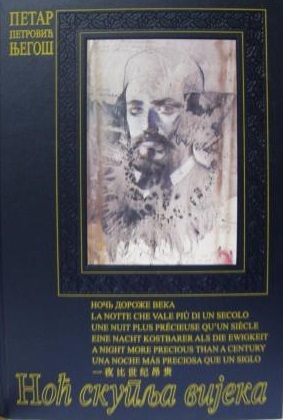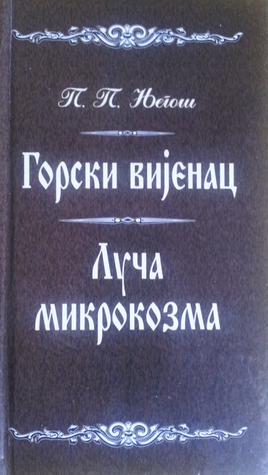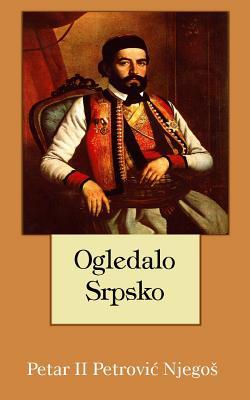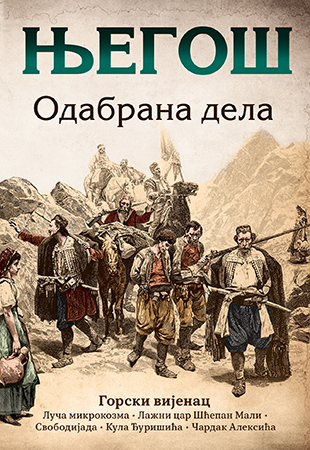
Radivoje "Rade" Tomov Petrović was born on 13 November (1 November Old Style), 1813 in the village of Njeguši, the capital of the Montenegrin district of Katunska Nahija. He was the son of Tomo Markov Petrović and Ivana Proroković Petrović. He had two brothers, Pero and Jovan, and two sisters. His was a member of the House of Petrović-Njegoš, Prince-Bishops of Montenegro for over a century. At the time of his birth, Montenegro did not exist as a state. The borders were undefined and Montenegro was recognised as part of the Ottoman Empire, while its de jure ruler was a Venetian Governor. Power actually lay with the squabbling, disunited clan chiefs, who variously recognised the authority of the Austrian Empire, the Republic of Venice, the Ottoman Empire or the Cetinje Metropolitan (Prince-Bishop).
Njegoš spent his early years in Njeguši. In 1825, his uncle Prince-Bishop Peter I sent him to the Cetinje Monastery to be tutored. He wrote his first poems there to entertain the local chiefs and monks. In the middle of the year, Radivoje was sent to the Topla monastery near Herceg Novi, where he was taught Italian, mathematics, ecclesiastical singing, the Psalter and other subjects by the monastery's hieromonk, Josip Tropović. He remained in Tople until the end of 1826, when he returned to Montenegro's capital, Cetinje.
On 20 January 1827, Prince-Bishop Petar I named Radivoje as his successor. Petar wanted to send Njegoš to Russia, but he lacked the needed funds, so he decided to educate Rade himself. He taught him Italian, Russian, German, English and French. Petar also gave Rade access to his extensive library. The Prince-Bishop assigned one of the foremost Serb writers of the time, Sima Milutinović Sarajlija of Sarajevo, Bosnia and Herzegovina, to be Radivoje's new teacher. He was taught the Classics, art, history, philosophy and literature.
Rade became the Bishop of Cetinje and Viceroy Metropolitan of Montenegro on 19 October 1830 at the age of 17 upon his uncle's death. On 31 January 1831 on the island of Kom in the Monastery of Vranjina, the Archbishop of Rascia-Prizren declared him as the official Archimandrite. Radivoj received the name Petar II in his predecessor's honour.
Peter II has contributed greatly to education by founding the first public Elementary School in Cetinje, Montenegro's capital in 1834. In 1836, he published The ABC of the Montenigrin language. In 1838 he also published The Serbian Grammar. He also re-printed the school textbooks originally printed by his uncle Petar I Petrović-Njegoš The Serbian elementary reading book.
In 1845, Peter II published the Ray of the Microcosm, an impressive, masterfully written philosophical work. In 1846, Peter wrote a collection of Montenegrin national poems - the Serbian mirror in honor of one of the greatest Russian writers - Pushkin.
In 1846 and 1847, Peter II was in Vienna, the Austrian Imperial capital. There, he published in 1847 The Mountain Wreath - his most famous work. It described the will of the Serbian people to fight for freedom in 2,819 verses. The same year, 1847, Njegoš wrote the Pseudo Tsar Stephen the Small, where he described the life of the first uniter and ruler of modern Montenegro - Tsar Stephen the Small from the 18th century.
In late 1848 and early 1849, Prince-Bishop Peter II assisted the Revolutionary fights of Croatian Ban Josip Jelačić and maintained close ties with the Principality of Serbia.
In 1851, Peter II caught tuberculosis. He paid a visit to Italy the same year, 1851, attempting to find a cure. Peter II Njegoš died in Cetinje of tuberculosis on 31 October (October 19 Old Style) 1851 - exactly 21 year after his accession to the throne; he was buried in a small chapel on top of Mount Lovćen where his mausoleum was built.









